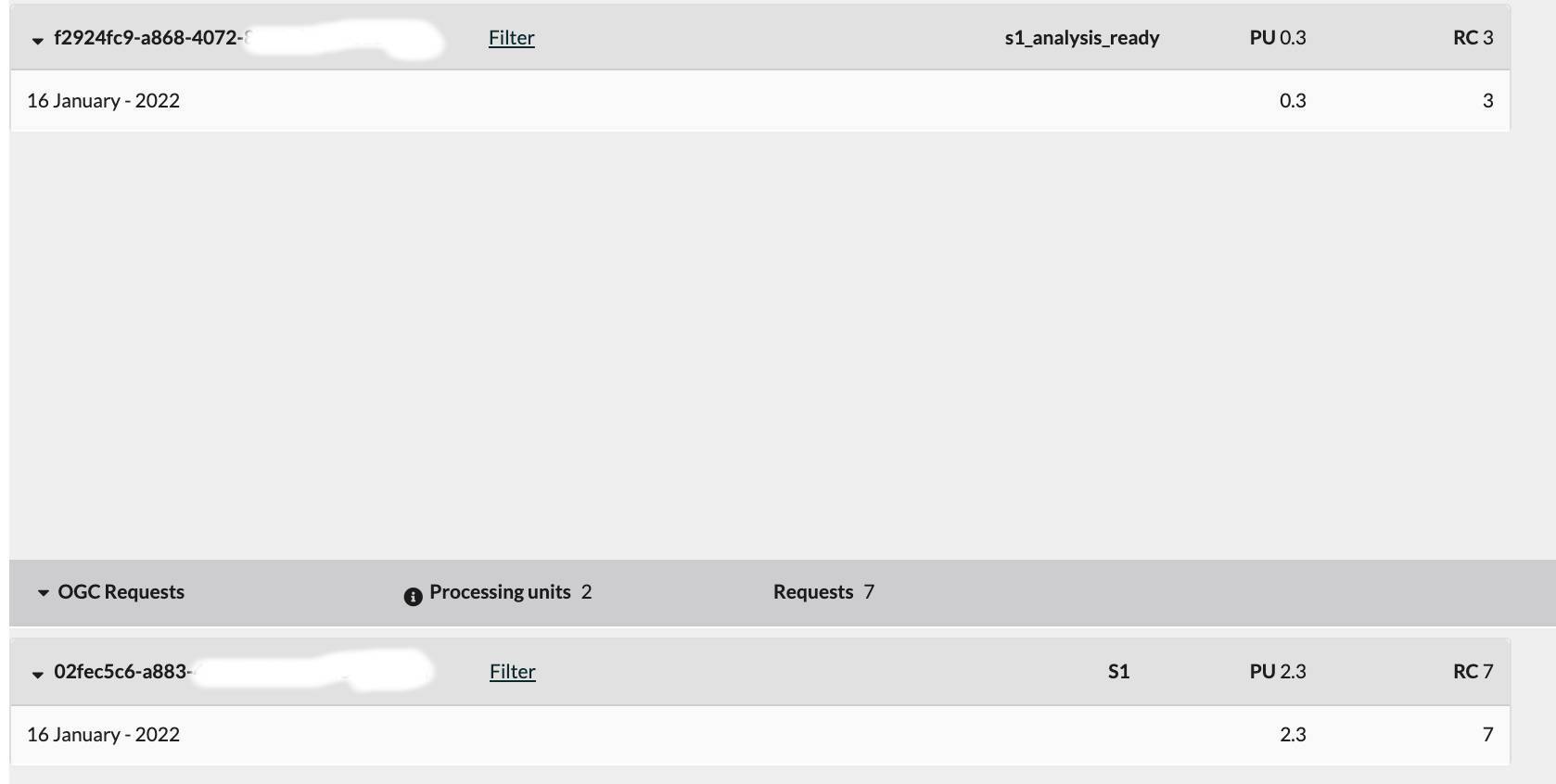Ok finally getting back to this. I read through some of the docs, looked at the request builder, and tried out the example you linked above. I also setup a configuration for processing Sentinel-1 in our account (which I think you can find that – there is only one of them). When I use the “SHConfig()” function I specify the “instance_id” of the configuration.
Several problems arrise:
- processing units used is way more than expected (like 3 pu per request for a small boundary – see below). I expected something like 0.01 pu.
- Returned data doesn’t make sense in multiple ways. I specify I want a geotiff (.TIFF) bytestring but it’s returning a numpy array, and the size is weird (it’s a square shape when my bbox is rectangular). I don’t really understand why the “SentinelHubRequest” has a “size” input when the bbox and processing functions selected for S-1 determine the size.
- I’ve already specified a configuration (the instance_ID noted above). Why can’t I just send a boundary and date range and get back all the processed imagery available for S-1 in that range using the processing setup in my configuration? It seems this requires me to specify the eval script and input_data which I shouldn’t have to since the endpoint has already got the configuration specified.
Thanks.
request=SentinelHubRequest(
evalscript="""
return [VH*2]
""",
input_data=[
SentinelHubRequest.input_data(
data_collection=DataCollection.SENTINEL1_IW,
time_interval=('2019-11-05', '2019-12-03'),
)
],
responses=[
SentinelHubRequest.output_response('default', MimeType.TIFF)
],
bbox= BBox(bbox=[-93.776497, 42.016923, -93.769195, 42.019745], crs=CRS.WGS84),
config=configs
)
response = request.get_data()


